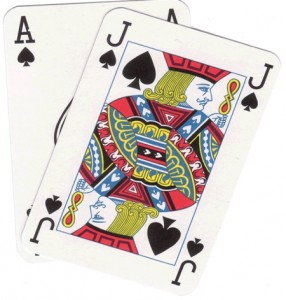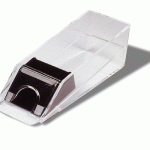It has been some time since we have had an installment of hedge economics, so let’s correct that shall we?
I think that it bears repeating that the over goal of the approach is to maximize your winning potential while minimizing your exposure; i.e. your bankroll! So if you don’t play at a 6-8 deck manual shuffle table with about 2-3 other players all playing proper Blackjack, your expected positive return will be diminish. But you know all that, so now what?
When I tell people about the mechanics of hedge economics I get a wide range of looks from puzzled, to intrigued, to crazy enthusiasm. Whatever the case may be, I almost always get the, “does it actually work?” Well let’s look at the last four sessions that I had while in Vegas as a case study.
The first place that I sat down was Paris. There was a nice mix of people and I settled down at first base with 3 other people at the start of a new shoe. I started with $400 in chips and a $30 min bet. I do this mainly because I like to be able to hedge up to $50 after a win and not be basically “stacking” my bet without pulling something back. I talk in detail about this in the first post on hedge economics, so I won’t go over all of the reasons why, but the main increments of hedging after wins is a green $25 chip, or quarter.
The play was crisp and I got a lot of double down opportunities and got on a nice roll towards the later 3rd of the shoe. At the height of the run I was at around $1150. Normally this would have been a good place to stop, but I was having a good time and just decided to ride out the rest of the shoe. There were some more up and downs for the rest of the ride, but as the dust settled I got up from the table with $1047. Not bad for the first run.
The next day I sat down at $25 table at Caesar’s with $400 and hopes of another little run. I like playing at the main pit because they offer the best possible players odds and generally most people down there play straight. So after about an hour and a half of nothing great there was a nasty little run of about 6 or so straight losses and bang I am tapped out.
That’s not unusual mainly because if you do everything right you are happy with about a 50/50 chance of winning. The key is to really get the most out of the times that you are winning, and either minimize your losses or elongate your play.
Well I am not one to be deterred, so I sidled up to another table later that night and bought in again for $400. Unfortunately for the home team the results weren’t that great. I liked my tablemates, but 3rd base left and was replaced by this woman who was playing scared. She announces after the 2nd time I watch her not take a card with 16 versus a dealer 10 card that she never hits 16. I look at her and then look at my chips knowing that they will all be in the dealers rack before too long. I was right and well I have no one to blame but myself. I should have just gotten up, but I decided to roll with it. Well “it” cost me my buy in.
So at this point I am down and don’t have much to say for myself other than I just need to find the right table. And that table came late at Paris. There was 5 people already seated and the dealer was shuffling so I said what the heck and I sat down with my usual $400.
Since it was late, Lori decided just to watch me as I had told her that I was only going to play a little bit and then we could go to bed. She normally plays herself, but wanted to show me a little support. How nice.
Well this shoe was hot from the jump. I win the first 12 hands and frankly could have won even more if the guy on my left would have hit that soft 17 like he should have. It was equally tough in that I had about $250 out there and a 20 in the hole so my stomach sank a little when the dealer turned a 6 card 21. Dems the breaks as they say.
I decide to continue the ride it out and almost immediately got on another roll. I won another 7-8 hands in a row and really had some nice BJ sprinkled in there and looked at my stack and decided just to cash out. I didn’t even play an entire shoe and I cashed out with $1205 after tips and what not.
So what’s the bottom line? I think that these 4 consecutive runs capture the essence of what happens on average in that when you lose you only lose what you are willing to wager (in my case I wagered my entire buy in each time) and when you win you can really max it out. Now it’s important to note that you have to understand that when you are on a great run and then you have a couple of losses of your min. bet you have an opportunity to reassess and take your winnings off the table. When you are on a negative run you don’t necessarily have to risk your total buy in, but you won’t lose more than you put out there. These two points are equally important as you don’t want to sit at a table too long when you have won a bunch because you don’t want to give it all back, and you certainly don’t have to stick around to get your head kicked in if you are running bad either.
Just remember to always be getting on that roller coaster on the way up and don’t be afraid to get off before the point that everyone starts screaming!

